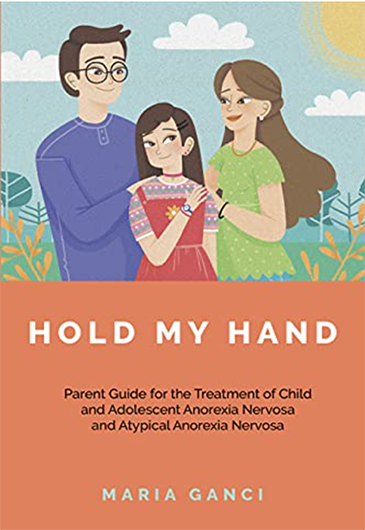
Hold My Hand
A lifeline for parents beginning the journey through adolescent anorexia
Are you searching for the most effective way to support your adolescent through treatment for Anorexia Nervosa or Atypical Anorexia Nervosa?
Hold My Hand is the essential companion for parents at the start of this overwhelming and often frightening journey. Written by an experienced clinician, this compassionate guide offers clear, practical advice to help you understand the illness, respond to your child’s distress, and navigate daily challenges—from how to feed your adolescent to managing difficult behaviours with confidence and care.
More than a book, it’s a steady hand to hold—offering you the knowledge, tools, and emotional support needed to stand beside your child and guide them toward recovery.
A lifeline for parents beginning the journey through adolescent anorexia
Anorexia Nervosa is a complex and often misunderstood illness that can have devastating physical, emotional, and developmental consequences. While traditional treatments have focused primarily on weight restoration, many families are left asking: What about the psychological recovery? Parents instinctively know their child needs more—and they want to be part of that healing process.
“Hold my Hand” is a practical, skills-based manual is designed to do just that. It complements Adolescent & Parent Treatment (APT)—an innovative approach that addresses both the physical and psychological dimensions of the illness. Written specifically for parents, this guide empowers you to take an active, compassionate, and informed role in your child’s recovery.
Inside, you’ll find:
- Clear explanations of why eating feels impossible for your child.
- Insightful guidance on how to speak with your adolescent to reduce fear and build trust.
- Strategies for using the time between meals to deepen connection and emotional safety.
- Tools to recognise anorexic behaviours that may sabotage progress—and how to respond effectively.
- Support for understanding your own emotional responses and strengthening parental attunement.
This book also explores how renourishment strategies can be tailored to your adolescent’s unique temperament and traits, making treatment more personal and effective.
Whether you’re just starting the journey or seeking to better support your child through ongoing care, this manual offers clarity, confidence, and connection. It’s also an essential companion for clinicians guiding families through the challenging terrain of eating disorder recovery.

